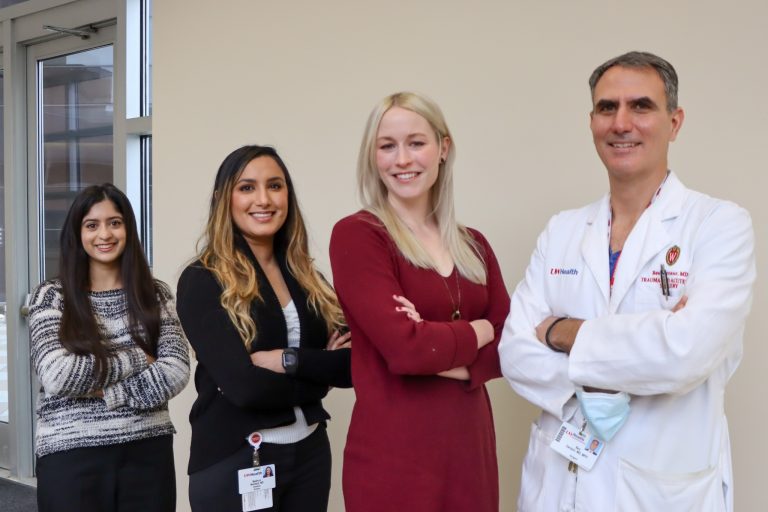The main focus of Dr. Zarzaur’s research efforts and the area in which we hope to leave a lasting impact is in maximizing the quality of life after injury. Relieving human suffering is part of Dr. Zarzaur’s vision, and improving the quality of life outcomes for injured patients is central to achieving this vision. The career development award Dr. Zarzaur received from the National Institutes of Health served as the foundation for the concept of the next step in this line of research, the Trauma Medical Home intervention. His previous research has shown that injury patients follow different trajectories in terms of physical and mental health recovery following injury, that recovery can be dynamic and change over time, and that these trajectories correlate with social and socioeconomic variables such as financial well-being and perceived social support. In order to make a difference in patients’ lives after injury we needed to develop an intervention that is personalized to their specific recovery trajectory and that provides coaching and social support.
Dr. Zarzaur’s collaboration with Malaz Boustani, MD, MPH at Indiana University really drove his work in this area forward. Dr. Boustani and his team developed a collaborative care intervention targeting older adults suffering from dementia. Collaborative care models are intended to manage patients with complex biopsychosocial needs. The main components of a collaborative care model are:
- A care coordinator who works with the patient, the informal caregiver, the primary care provider, and specialists to monitor the biopsychosocial needs of the patient and to deliver evidence-based and individualized care protocols;
- A set of standardized tools including a measurement and monitoring of the patient’s biopsychosocial needs, individualized care recovery protocols, and self-management educational materials;
- Population health decision support software to facilitate the delivery of each individualized recovery care plan and monitor the effectiveness of such a plan in meeting the biopsychosocial needs of the patients and their informal caregivers.
In a randomized controlled trial, intervention patients received care management by an interdisciplinary team using the principles of collaborative care. At 12 and 18 months, intervention patients had significantly fewer behavioral problems compared to usual care.
Compared to patients with dementia who have a declining trajectory, we expect dynamic recovery trajectories that vary by individual following injury. We designed a collaborative care intervention to target this population called Trauma Medical Home. The Trauma Medical Home intervention integrates a feedback loop where a patient’s status is measured frequently and the intensity and type of care recommended by the team increases or decreases per protocol and in conjunction with the patient’s need at the time. The National Institutes of Health funded a randomized controlled trial of this intervention, and we are currently enrolling patients in Indiana and here at UW. We believe the Trauma Medical Home concept will be effective and can be rapidly rolled out to trauma centers across the country to continue service to patients by relieving suffering and improving long term outcomes. Future directions of research will revolve around applying collaborative care to other patient populations with dynamic recovery trajectories as well as studying how best to implement these interventions on a broad scale in a cost-effective way.
Dr. Zarzaur's Lab
